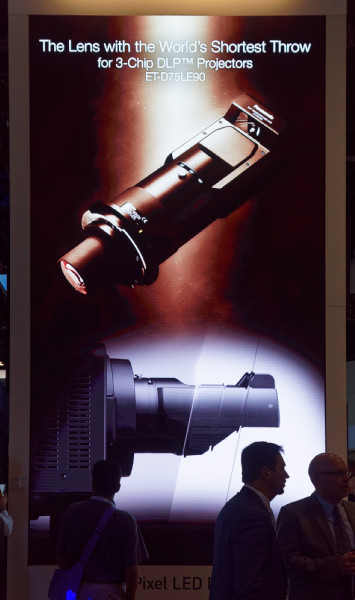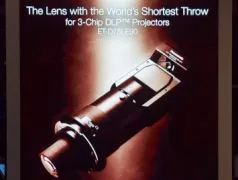 Panasonic used its direct led to advertise its projectorsPanasonic was highlighting, as it started to say at ISE, that its ‘open’ (that is, open to third party software vendors) platform that is based on an Android core (although with no access to the Play Store) is now gathering support and we heard that there is support from Scala, Wondersign, Brightsign and a lot of others.
Panasonic used its direct led to advertise its projectorsPanasonic was highlighting, as it started to say at ISE, that its ‘open’ (that is, open to third party software vendors) platform that is based on an Android core (although with no access to the Play Store) is now gathering support and we heard that there is support from Scala, Wondersign, Brightsign and a lot of others.
The LF8P series includes the HTML5/Android smart media player technology and has 500cd/mm² and is also intended for 24/7 operation.
In the flat panel segment, Panasonic was showing the new LF80 series which doesn’t have the player but is intended for 24/7 operation and adds features including 700 cd/mm², 1,300:1 contrast, HDBaseT support (although Panasonic has its own name) and with thinner design than previous generations. Panel technology is IPS with edge backlights and is available in 42″, 49″ and 55″ sizes with 6.3mm bezels. Inputs include VGA, DVI-D, HDMI and video, but (slightly surprisingly) no DisplayPort connection.
The LF8 series mirrors the sizes and features of the LF80 series, but with lower brightness of 500cd/mm².
The new monitors will be available in September.
The LFE80 series (43″/48″/55″/65″), which supports 16/18 hours per day operation and was launched at DSE was also being shown.
Panasonic’s US solutions company (known as PESCO) has been a player in direct LED for some years, especially in stadiums. Now Panasonic is evaluating how to develop its direct LED business to support 1.25mm, 1.6mm, 1.9mm, 2.5mm, 3mm and 4mm options.
We report on Panasonic’s projectors in a separate article (Panasonic Shows Laser Phosphor Projector and Announces 4K Projector)
We also had a video on the comparison between a Panasonic LED display and an NEC video wall at the Display Summit (Panasonic and NEC Showcase LED vs. LCD at Display Summit 2015).

